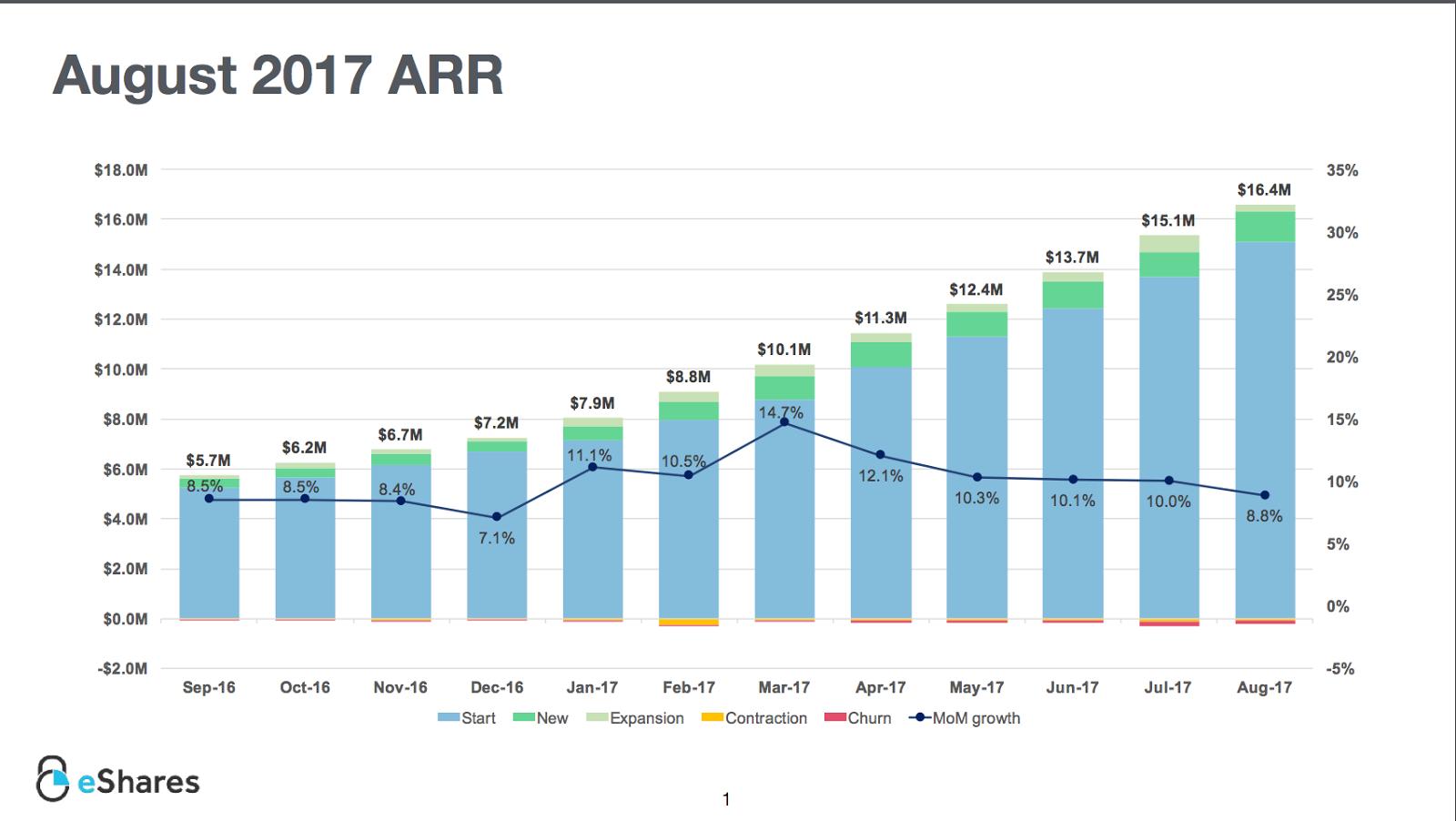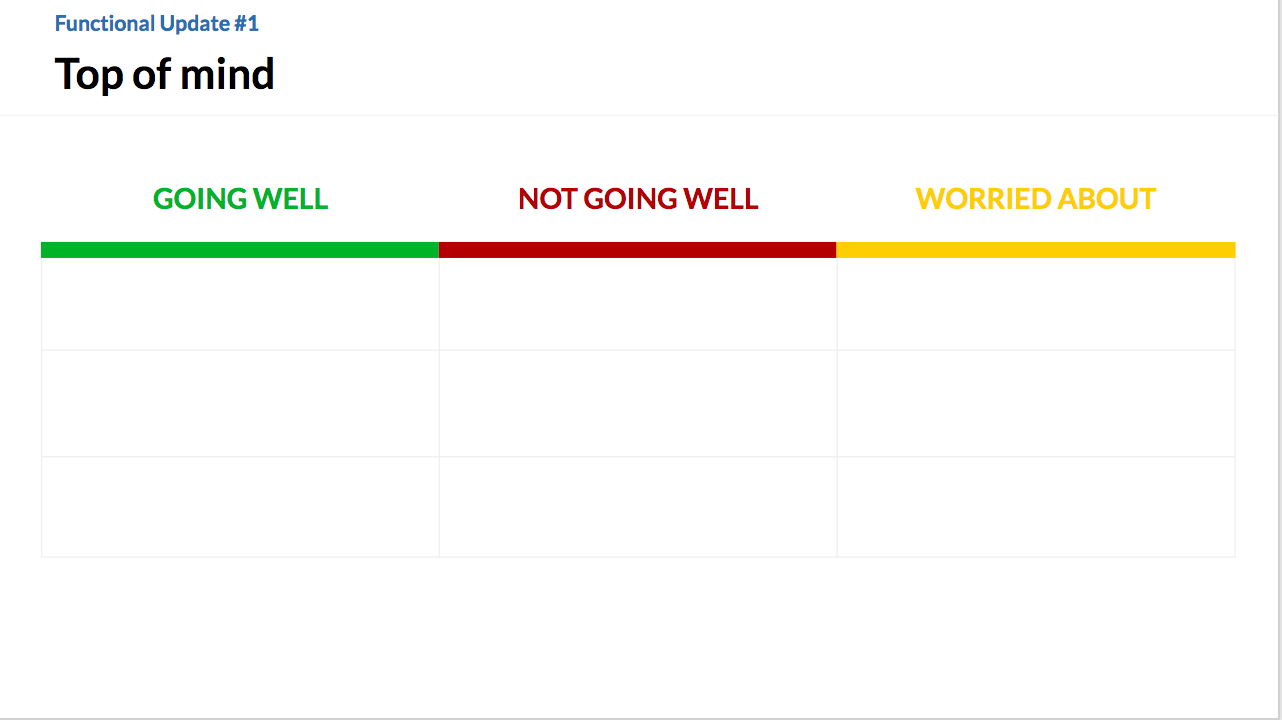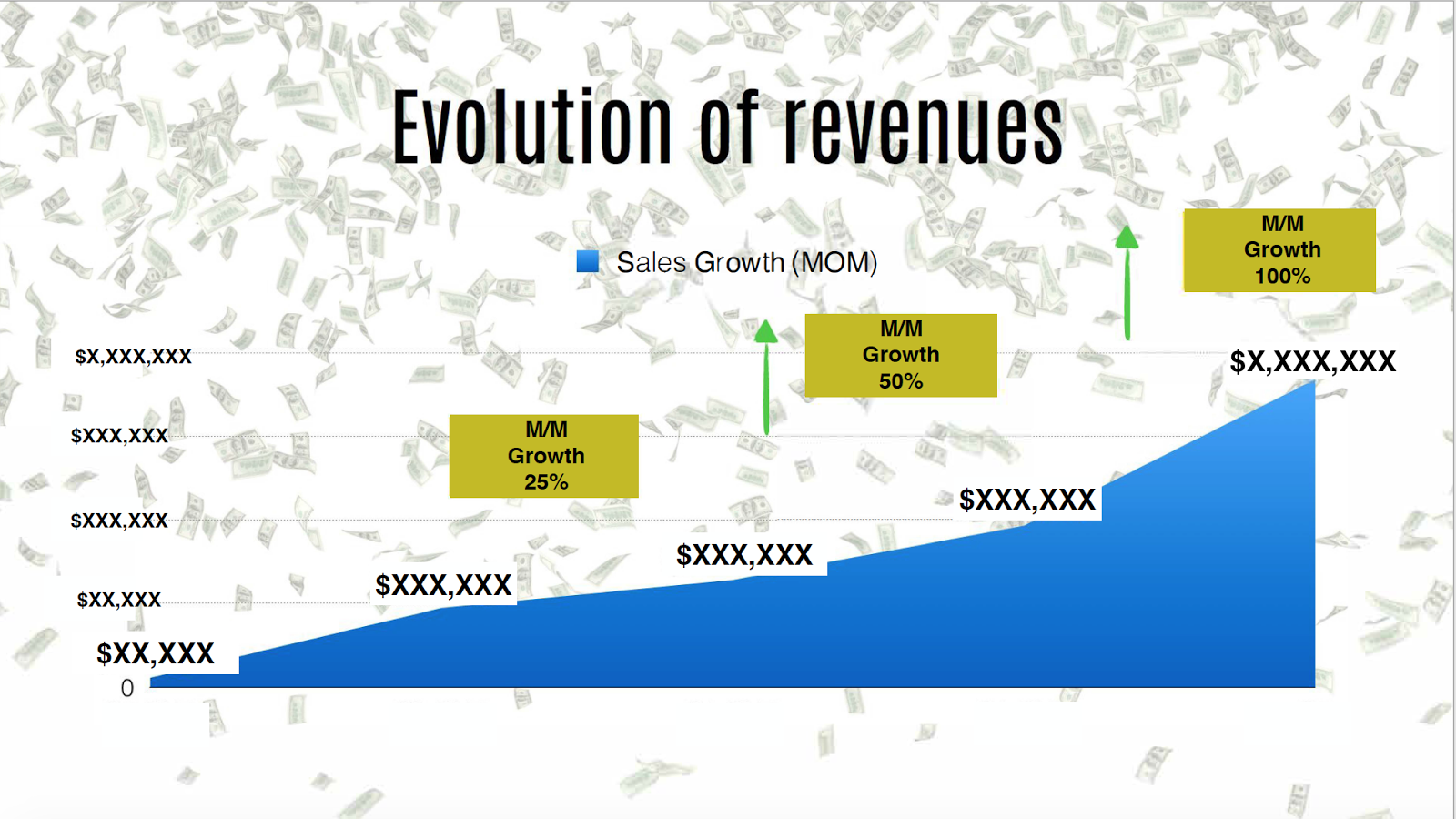This past summer at Union Square Ventures, Max Heald joined us as our summer intern. During his 10 weeks at USV, he helped us better aggregate insights shared across our portfolio companies through data collection. As part of this process involved reading through company board decks, he came away with a few top takeaways from his project, which he recently posted about on his Medium account. Below, the full text of his original posting:
After graduating from college in June, I had the chance to spend three months at Union Square Ventures, helping with a project that created anonymous aggregate insights for USV portfolio companies by analyzing data across stages, customers, and industries. In order to not put a lot of extra reporting effort on our companies, we approached this project by drawing from data in existing board decks. This work afforded me the unique opportunity to familiarize myself with many of our portfolio companies’ board decks, and the communication styles of the leadership teams behind them.
I quickly found out that there is no one standard board deck for a USV company (and in fact, we’re proud of that), but I did observe a few commonalities among the most effective decks.
At a high level, the best decks accomplish three things:
- Address two information needs simultaneously (the board’s need for information and the team’s need for advice)
- Speak about progress and pain points frankly
- Highlight a company’s unique culture
Here are 6 ways I saw this done best:
1. They place metrics in context
There’s a difference between telling someone, “Our GM decreased by 8% last month”, and “Our GM fell by 8% because we ran a promotion which netted us a 20% bump in total clients.”
The best board decks anticipate questions in advance, and answer them with clear, concise data. My favorite example is a simple graph of total ARR versus a bar graph of ARR broken down by addition and subtraction of clients, and expansion and contraction of client spend. Our portfolio company eShares does an excellent job of this:
Another excellent example of effective data context is a 12-month trailing P&L. Most of the decks I read had monthly data for the most recent quarter, and projections for a few months out. I ran into a couple problems here: First, many companies’ board meetings happen infrequently enough where there are significant gaps in data. This makes it extremely difficult to understand a company’s financials in the context of their most recent fiscal year without making a data request to the company, something we generally like to avoid. In the case the data does overlap, however, it still requires piecing together information from multiple decks to get a decent view of the last year. As a recent college graduate / workaholic, I’m happy to do this. I imagine a board member of a venture-backed company would be less inclined.
For these reasons, the 12-Month Trailing P&L is perfect; not only is it an easily-updated table, but it’s a way to view the scope of a company’s financials over a substantial amount of time. Though things often change drastically from quarter to quarter, most investors want to see how the company has grown through multiple phases. And though projections are usually wrong, including them for the next quarter or two is usually worth doing, too.
2. They structure decks to gather input
Board meetings are typically the only time when all of the key stakeholders of a company are in the same room, so naturally, it makes sense to wring as much as possible from these discussions.
Some of the best decks I read do this by kicking off the deck (and thus, the meeting) with a board-only Q&A. This encourages board members to come in prepared to fire away to the CEO and their leadership team.
Structuring a deck this way offers an incredible method of ensuring preparation from the stakeholders of a company, and structuring meetings effectively. Give them the data, and let them loose. It also sets time for the outside stakeholders who know a company best to have an unfiltered discussion during which unexpected ideas may rise to the surface, before the team then uses the rest of the time to address their own pre-planned questions.
The best of these team-led sections of decks tend to focus on a few key issues, rather than providing comprehensive data streams; evaluating potential key hires, discussing a fledgling revenue stream, or a potential acquisition offer could all be strategic issues worth spending time on.
Great board decks balance gathering information on what the team needs help with, and providing critical updates the board needs to hear. Again, it’s about style, and leaders of a company will know what’s best. But by structuring decks to gather key input from the stakeholders in the room, teams can ensure they are putting board meeting time to its best use.
3. They are frank about what they need to do better, even if they don’t know how
Board meetings are not pitches. As obvious as this is, there is no need to sugarcoat, talk around, or avoid data points which are less than ideal.
The most effective board decks I read were direct about what the teams could improve, and asked for specific feedback from the board on how they could accomplish it, or better yet, on their already-thought-out plan for accomplishing it. Board members are a brain trust for a company, and they know it better than anyone outside the team- if there is a place to be blunt about the challenges a company is facing, it’s with them.
4. They pull out the numbers that matter
Most companies track many statistics for internal use, but when it comes to two-hour board meetings, there are often a few key metrics which are the best indicators of the health of a business. As with discussion topics, narrowing in on these metrics can focus the conversation and give the board a broad understanding of the company’s situation quickly. In the interest of time and productive conversation, it’s usually better to go deep than broad.
Considering SMART metrics (Specific. Measurable. Achievable. Relevant. Timely.) here might be a useful litmus test for figuring out what to track. Whether it is gross margin, active users, and LTV, GMV and MRR, or even a statistic uniquely effective for the business, the best board decks bring out the key levers of the company for a more productive discussion.
5. They highlight key wins, and the people responsible for them
Most decks I read tended put these up front, or worked them into their brief overview of company progress, as a way to kick off the discussion on a high note. The part I enjoyed most, though, was how many companies would include recognition for the non C-level employees who spearheaded these big wins for the company.
Especially for people who prefer “the right people knowing” of their contribution over more public, company-wide recognition, this is an excellent way to show appreciation for team members who excel.
6. They let company culture inform the deck’s style
Board decks are art. And art often tells us as much about the artist as it does about itself. I came across a consumer platform company’s deck which really popped; translucent spreadsheets and statistics against varying hues of neon. A security-focused company’s deck was a stoic black-and-white, the pre-set Powerpoint template unchanged in any way. Jobbatical’s deck, as you can see below, throws in just a bit of personality.
Each of these three decks conveys a different company culture. One focused on imbuing its office with as much liveliness as the platform they’re building. One so serious about security, it doesn’t have time for design. One playful, unorthodox, and a little weird, in a great way.
Every board meeting is a chance to for company leaders to communicate to their stakeholders what they have built. Half of that work is communicating the culture of the workplace they have created. And since these decks are meant to be read as well as presented, it’s crucial that culture is communicated through the style of the deck, and not just the presentation of it. The best teams know this, and use it as a way to demonstrate their leadership.
A final thought:
While they may not be built to be as flashy as a pitch deck, board decks can be an incredibly strategic and constructive communication tool for your business.
They are a chance to show your stakeholders how well you can synthesize the key levers of your business, discuss them efficiently and effectively, and communicate directly any problems that need to be tackled. They are an art, and a chance to show off the culture and team you have built.
And as an opportunity for a demonstration of effective leadership, to the stakeholders who are the most active supports of your company, they are well worth the effort.
Max recently graduated from Northwestern University, where he was an Agile coach and two-time founder. He is currently interested in venture and startup roles that allow him to meet and learn from great founders.
You can follow him on Twitter at @max_heald, or reach him at maxheald@comcast.net





